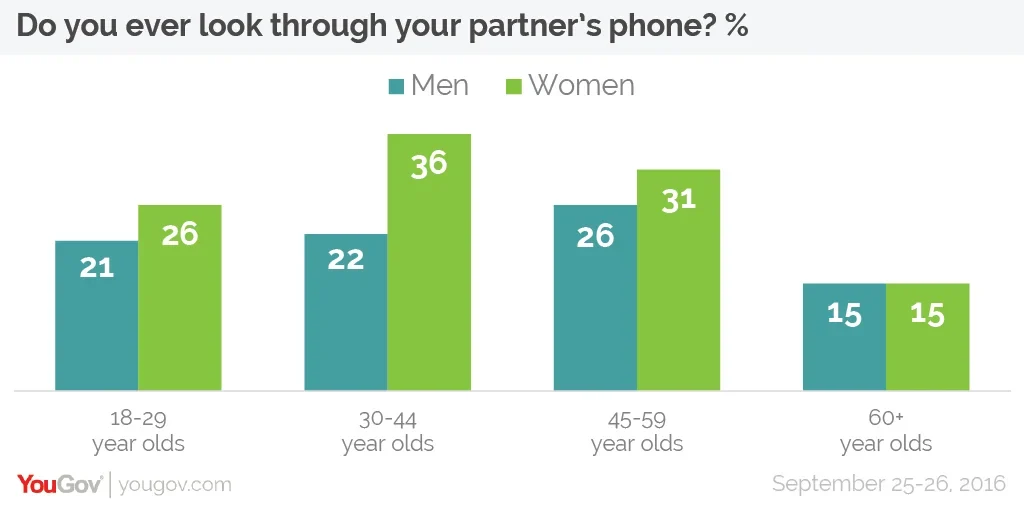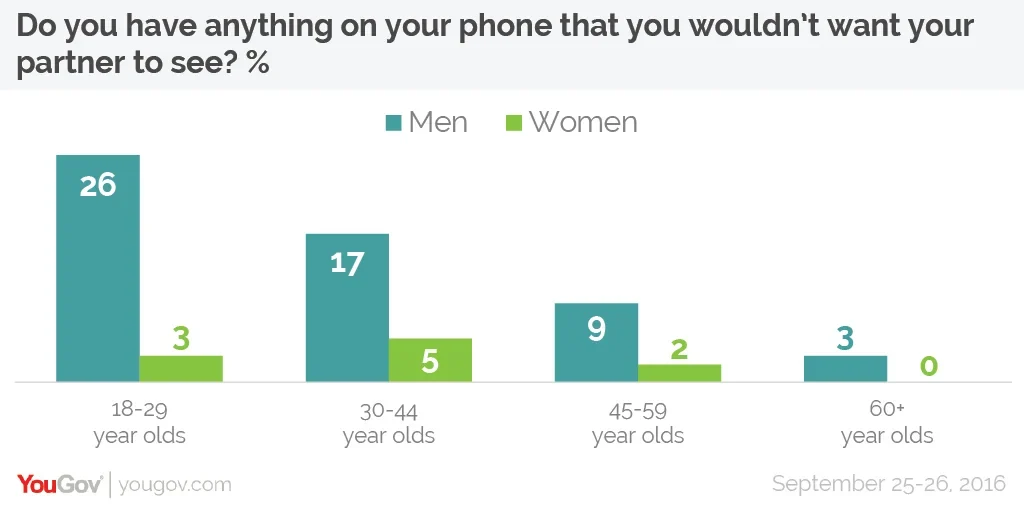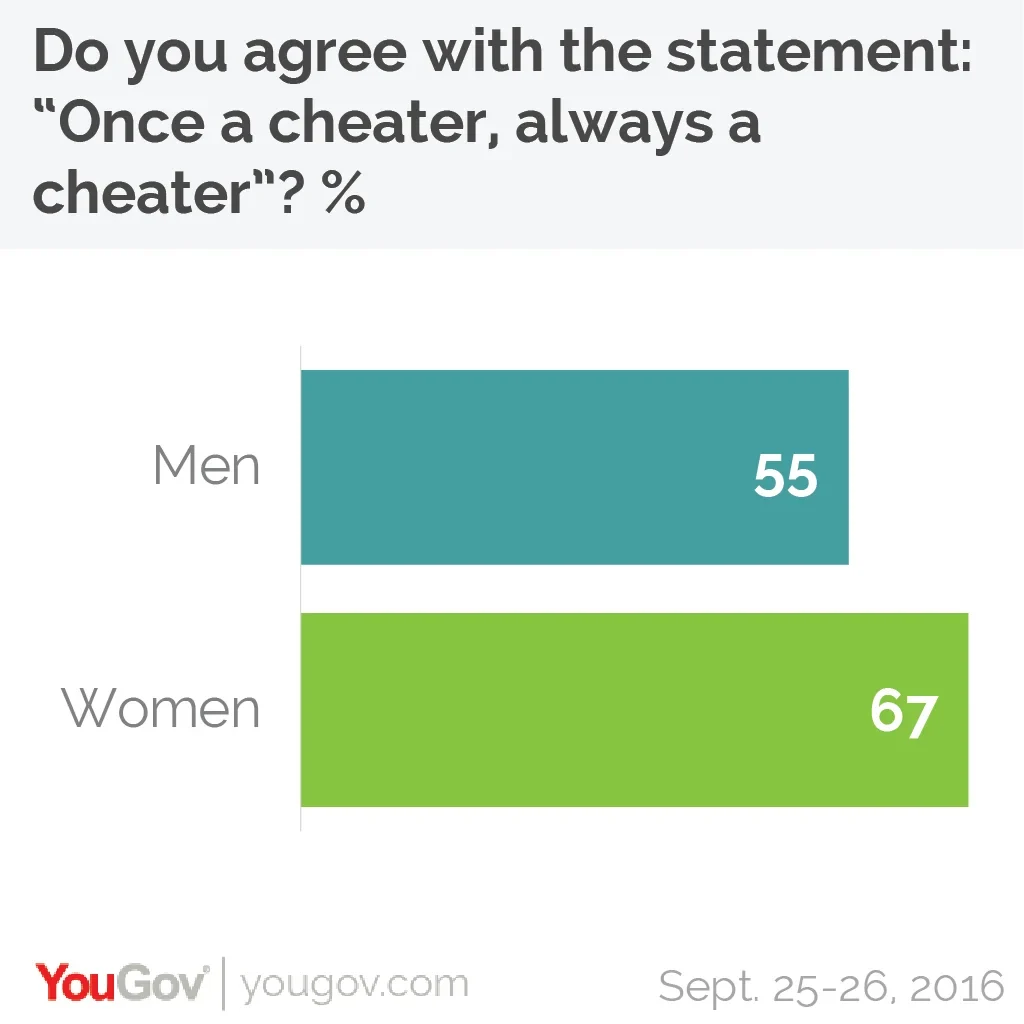Men - particularly younger men - are far more likely than women to have something on their phones they wouldn't want their partner to see
In August a British diplomat was arrested for assaulting his wife after she challenged him on messages on his phone revealing that he was having an affair. One of the most commonly covered aspects of the story was the fact that the woman had gained access to her husband’s phone by using his thumbprint to unlock it whilst he was asleep.
Most British people do not have to go to such Mission Impossible-style lengths to gain access to their partner’s phone. The vast majority of people (87%) are happy for their partner to look through their phone, although men are twice as likely to be unhappy with this as women (12% vs 6%).

As with the diplomat, apparently this is with good reason. Men (in particular younger men) are much more likely than women to have something on their phone that they don’t want their partner to see. Overall 11% of men and 2% of women said they had something on their phone they didn’t want their partner to see, but this figure rises to 26% of 18-29 year old men and 17% of 30-44 year old men.

It is perhaps unsurprising, therefore, that women are more likely to go through their partner’s phones than men. Overall, 27% of women and 21% of men say that they look through their partner’s phones – women aged 30-44 are the most likely to look through their partner’s phone at 36% (compared to 22% of men the same age). Nearly a quarter of men (23%) say they are aware that their partner goes through their phone, compared to 15% of women.

If, like the diplomat’s wife, you discover evidence of infidelity on your partner’s phone the question then becomes what do you do about it? Do you dump your partner or give them a second chance? The survey suggests that for many a second chance is out of the question – more than six in ten people (61%) say they agree with the statement “once a cheater, always a cheater”. Women are more suspicious about cheaters’ ability to change their spots – two thirds (67%) of women agree with the statement compared to 55% of men.
Photo: istockphoto






